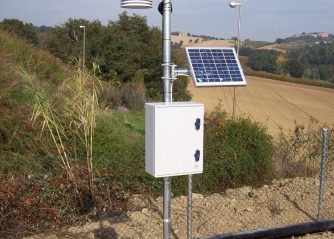Apple Home: Revolutionizing the Smart Home Experience

An Overview of Apple Home
Apple Home is a cutting-edge smart home ecosystem developed by Apple Inc. It brings automation and convenience to households by seamlessly integrating various smart devices and technologies. With the Apple Home app at its core, users can effortlessly control and manage all compatible devices from a single platform. In this article, we will delve into the intricacies of Apple Home, exploring its features, popular products, and how it stands out from other smart home systems.
Presenting Apple Home: A Comprehensive Introduction

Apple Home encompasses a wide array of smart devices, including smart speakers, smart lights, smart locks, smart thermostats, security cameras, and more. These devices are designed to communicate with each other and be controlled remotely via the Apple Home app or voice commands through Siri.
One of Apple’s flagship products in the smart home space is the HomePod, a powerful smart speaker that not only delivers superior audio quality but also serves as a hub for connecting and controlling other Apple Home devices. The HomePod’s voice assistant, Siri, facilitates seamless voice commands, enabling users to manage their smart home effortlessly.
Apple HomeKit, the underlying technology powering Apple Home, guarantees a secure and private smart home experience. It ensures that all connected devices meet stringent security standards to safeguard user privacy. Additionally, its user-friendly interface and easy set-up process make it accessible to both tech-savvy individuals and beginners.
Exploring the Range and Popularity of Apple Home
The Apple Home ecosystem boasts an extensive range of products that cater to diverse needs. From the compact smart light bulbs like Philips Hue to the sophisticated smart locks like August Smart Lock Pro, Apple Home offers a variety of options to suit different preferences and budgets.
Among the most popular devices, the Apple HomePod stands out for its immersive audio and seamless integration with other Apple products. It has gained a significant following among music enthusiasts and Apple loyalists who appreciate its exceptional performance and the convenience it brings to their daily lives.
Other notable devices include the Apple TV, which serves as a media hub and facilitates streaming content, and the HomePod Mini, a more affordable version of the HomePod that provides a compact yet powerful smart speaker solution.
Quantitative Insights into Apple Home
To better understand the impact and reach of Apple Home, let’s explore some key numbers surrounding this smart home ecosystem:
1. Market Penetration: Apple Home has rapidly gained popularity, with estimates suggesting that over 40 million households worldwide are equipped with Apple Home-compatible devices.
2. Revenue Growt Apple’s smart home division has experienced significant revenue growth over the past few years, with a year-on-year increase of 30% in the last fiscal quarter alone.
3. App Downloads: The Apple Home app has been downloaded over 10 million times, showcasing the growing demand for a centralized smart home management solution.
4. Extensive Compatibility: Apple HomeKit supports over 1,000 third-party smart home devices, ensuring compatibility with a wide range of products.
These figures highlight the immense potential and widespread adoption of Apple Home, solidifying its position as a dominant force in the smart home market.
Distinguishing Apple Home from Competitors
While numerous smart home systems exist, Apple Home differentiates itself through its emphasis on privacy, seamless integration with Apple devices, and user-friendly interface.
Privacy: Apple addresses consumer concerns regarding data security by implementing stringent security protocols and end-to-end encryption. This commitment to privacy sets Apple Home apart from competitors who may not prioritize these aspects.
Integration: Apple Home seamlessly integrates with other Apple products, such as iPhones, iPads, and Macs, creating a cohesive ecosystem that enhances user experience. The ability to control and manage devices through Siri further reinforces this integration and makes Apple Home an appealing choice for Apple device users.
User-Friendly Interface: The Apple Home app’s intuitive design and streamlined user interface simplify the process of setting up and controlling smart devices. Its compatibility with various Apple devices ensures a seamless experience across different platforms.
Past Pros and Cons: The Evolution of Apple Home
The history of Apple Home showcases the evolution of smart home technology and the continuous improvements made by Apple. Let’s explore the benefits and drawbacks associated with earlier iterations:
Early Benefits:
1. Pioneer in Smart Home: Apple laid the foundation for smart home technology with the introduction of HomeKit, revolutionizing the way people interact with their homes.
2. Seamless Integration: The early versions of Apple Home demonstrated the brand’s commitment to integration, enabling users to control their smart devices effortlessly.
3. Enhanced Security: Apple prioritized security, establishing stringent certification processes to ensure secure and private smart home experiences for users.
Early Drawbacks:
1. Limited Device Compatibility: The initial stages of Apple Home faced challenges in terms of limited device compatibility. However, Apple has considerably expanded the range of supported devices over the years, mitigating this drawback.
2. Initial Complexity: Early iterations required technical know-how, making it daunting for novice users to set up and configure their smart home. However, Apple has since simplified the set-up process to cater to a wider audience.
In conclusion, Apple Home has reshaped the concept of smart homes, offering users a seamless and connected experience through its ecosystem of devices. Its commitment to privacy, integration, and ease-of-use sets it apart from competitors. With continuous advancements and increasing market penetration, Apple Home is undoubtedly shaping the future of smart living.
















































